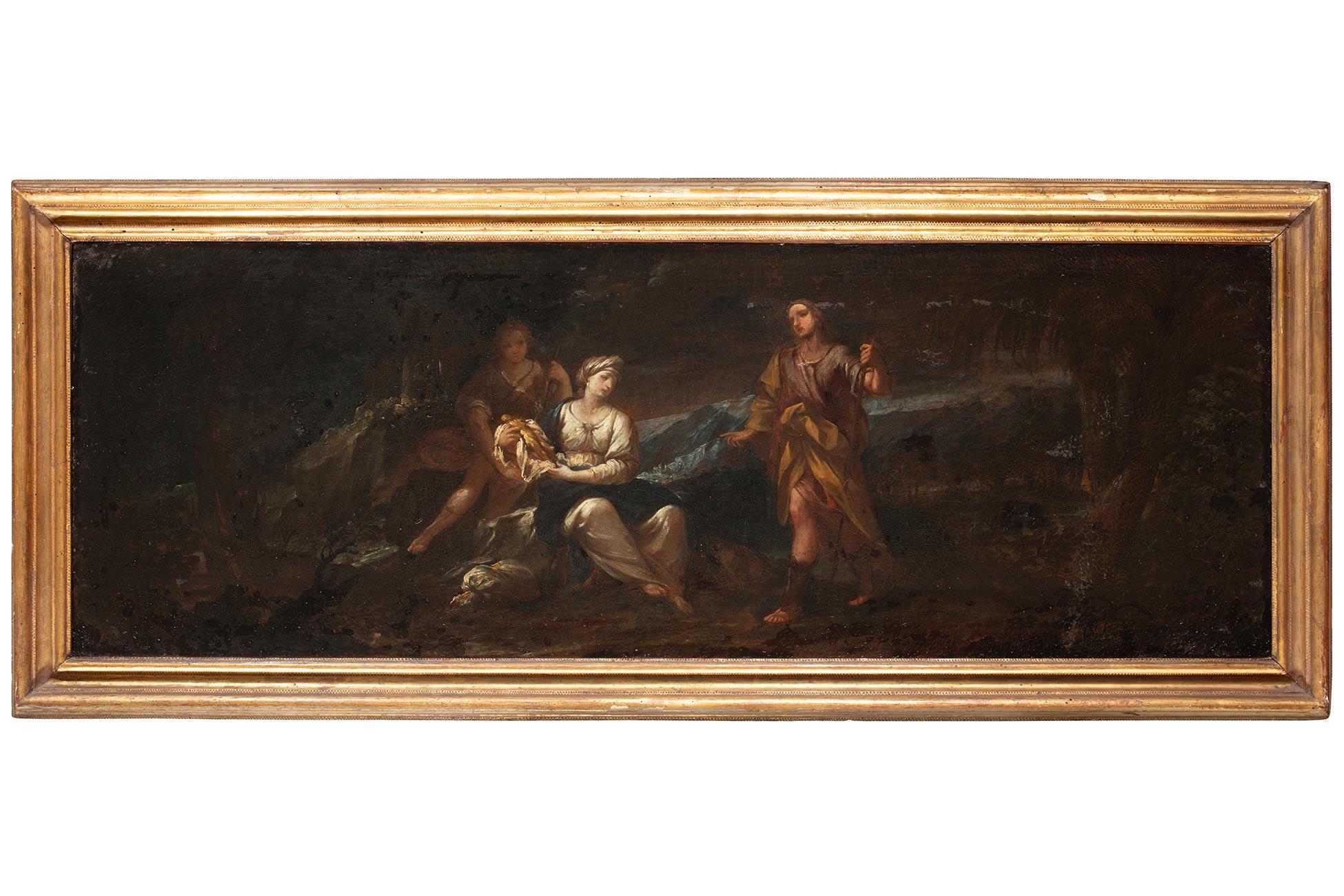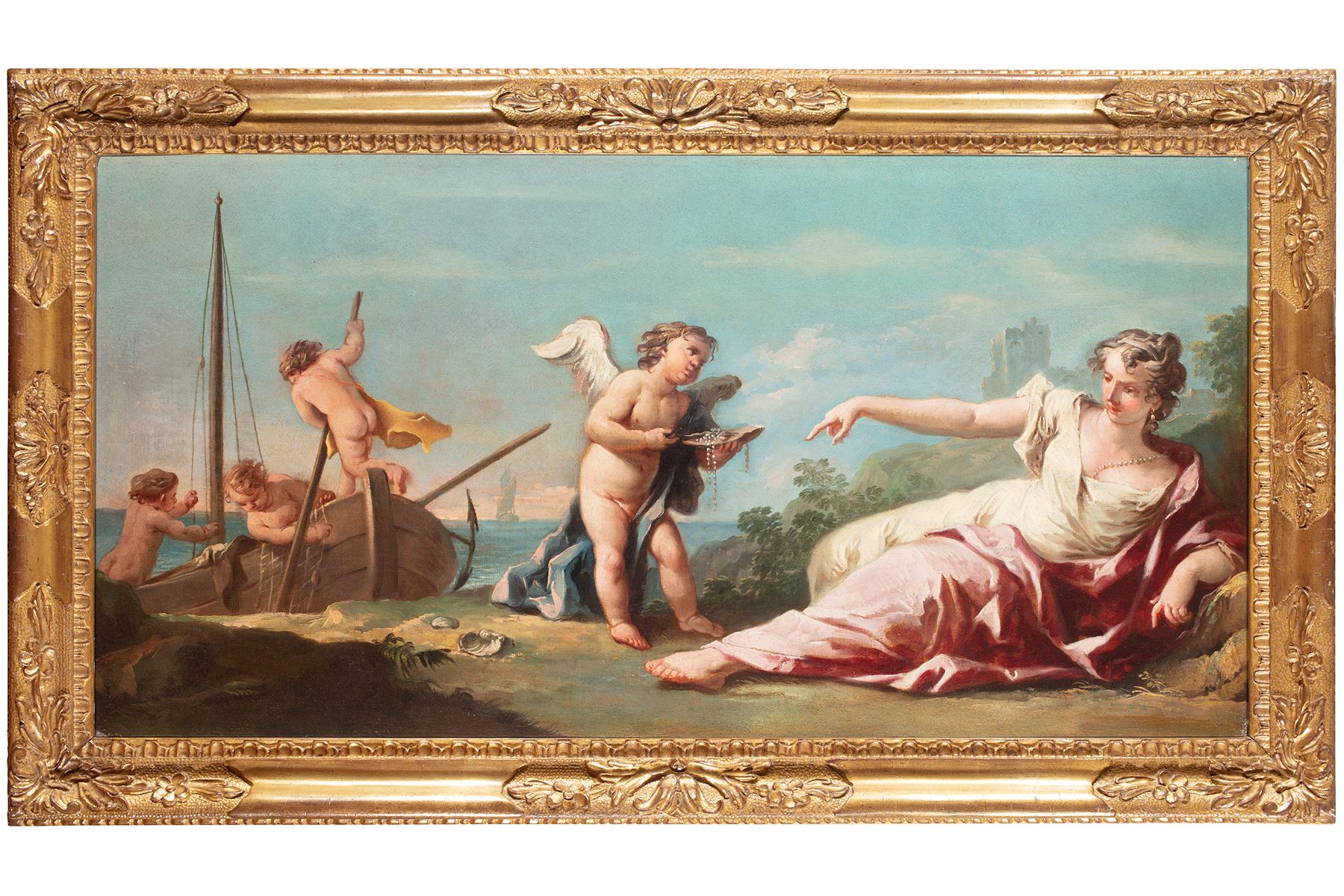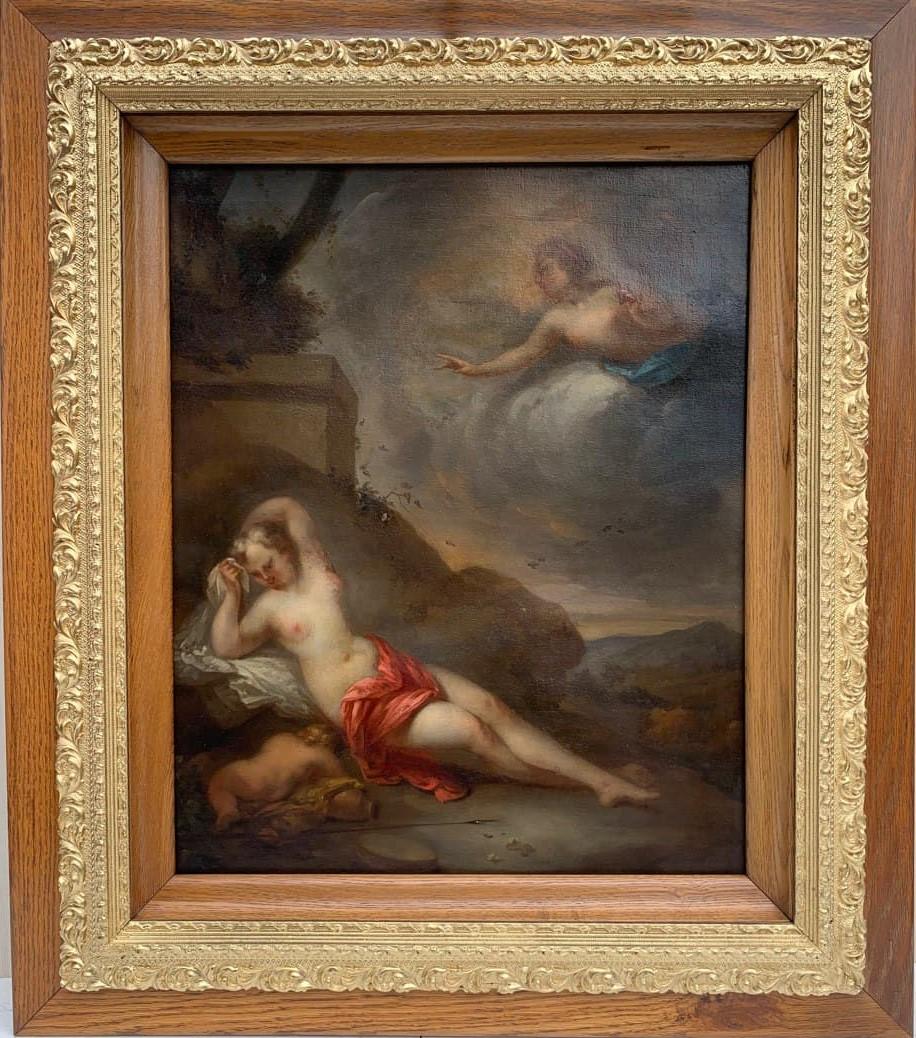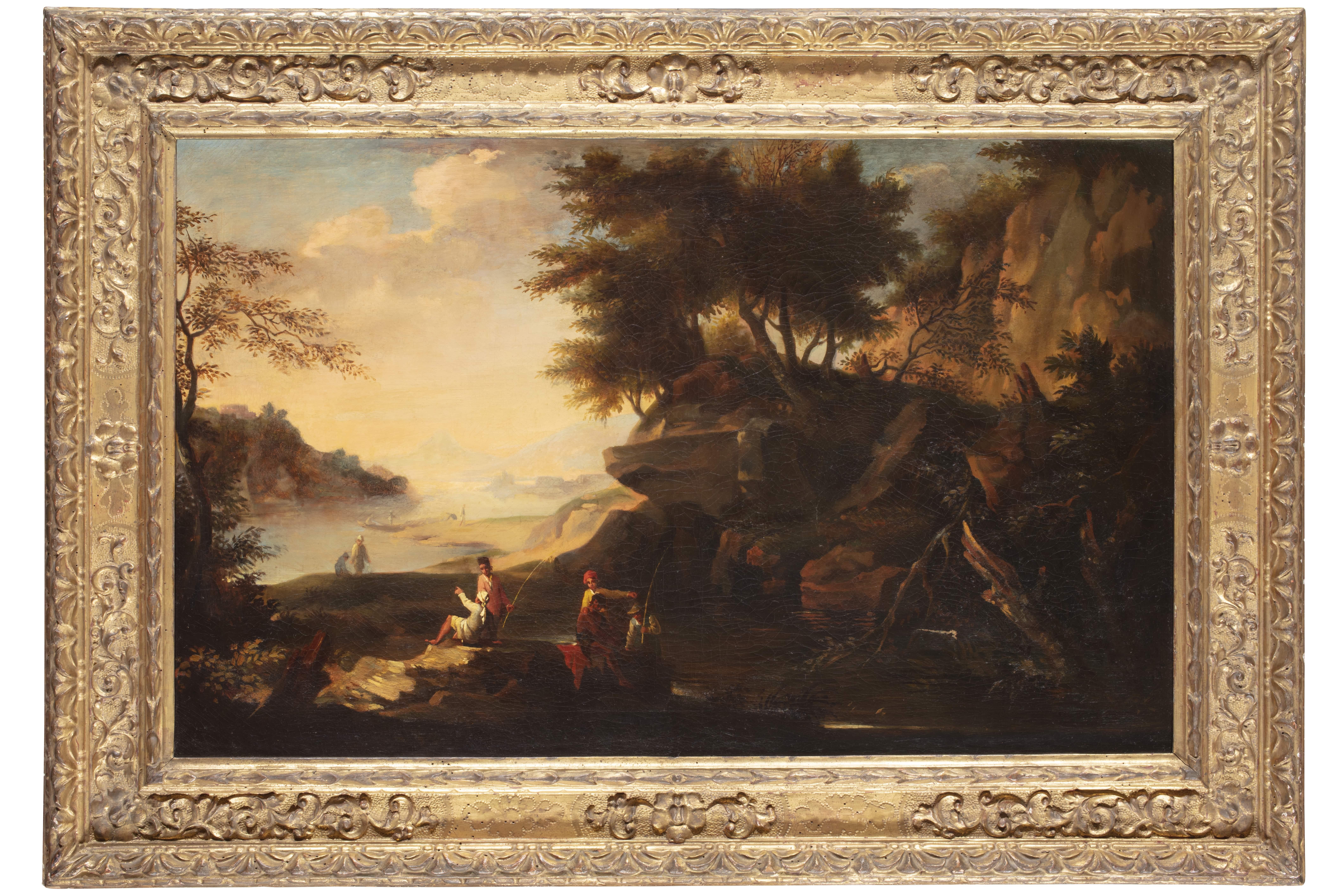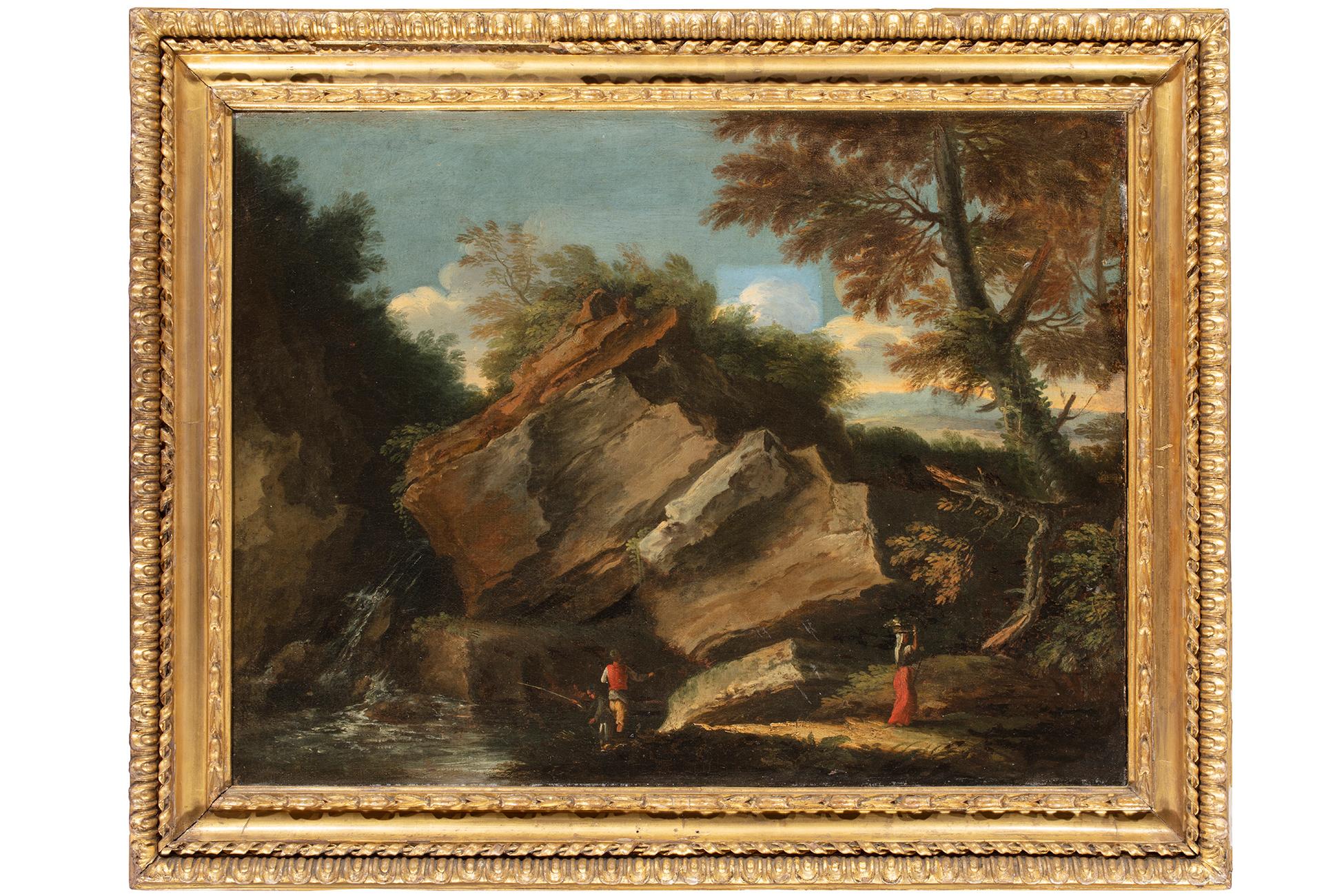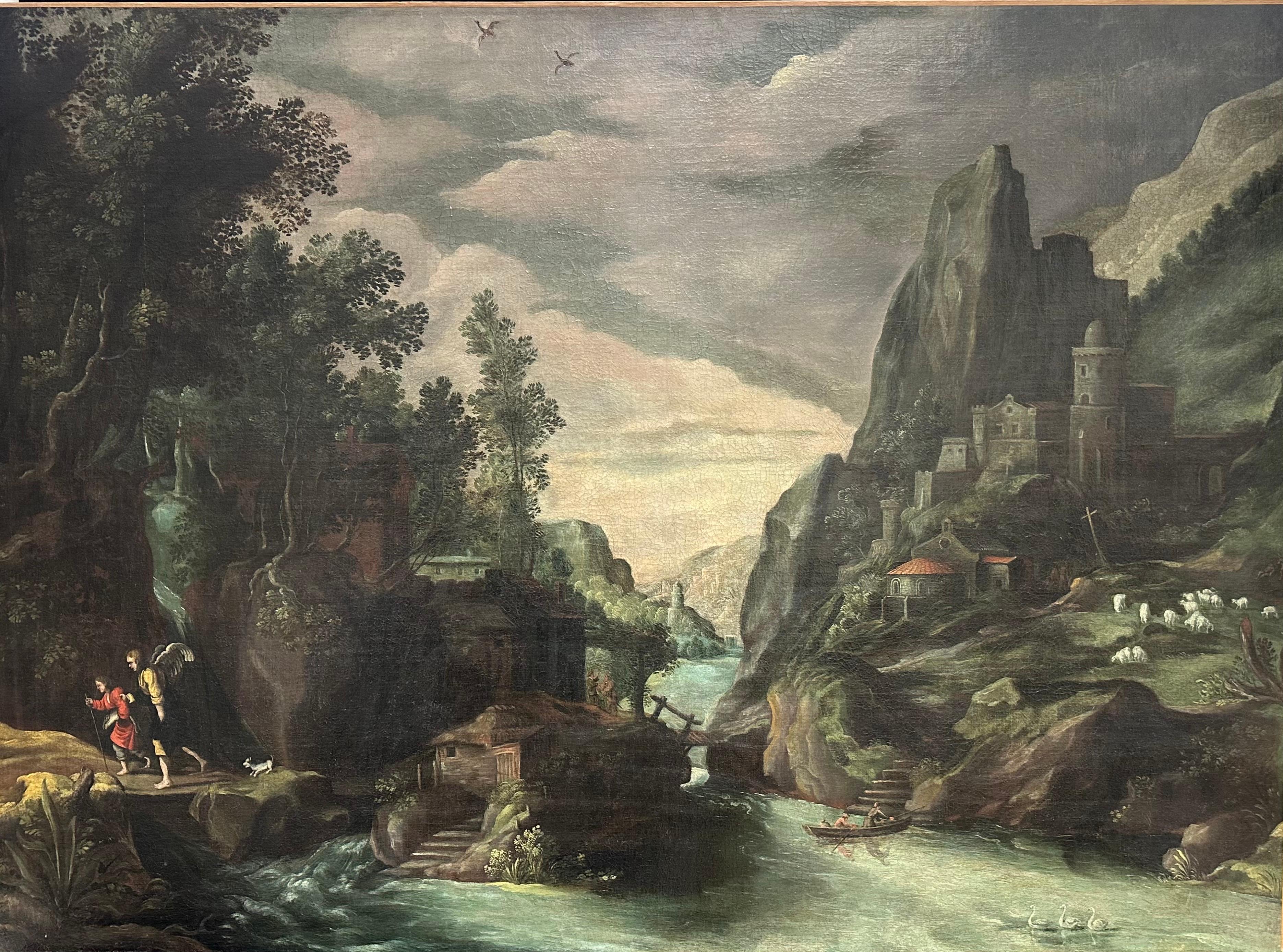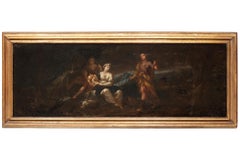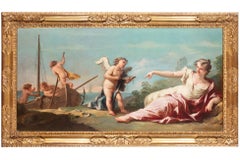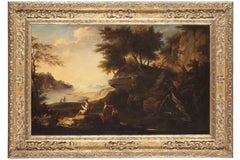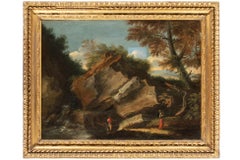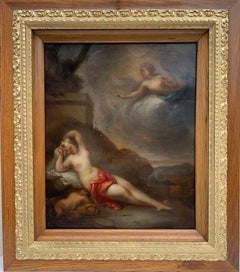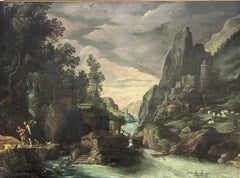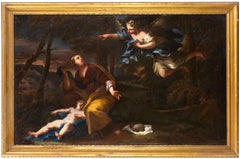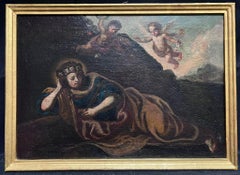Items Similar to 17th Century by Felice Torelli Hagar and the Angel Oil on Canvas
Video Loading
Want more images or videos?
Request additional images or videos from the seller
1 of 16
Felice Torelli17th Century by Felice Torelli Hagar and the Angel Oil on CanvasLate 17th Century
Late 17th Century
$18,188.96
$22,736.2020% Off
£13,585.26
£16,981.5820% Off
€15,200
€19,00020% Off
CA$25,058.63
CA$31,323.2820% Off
A$27,309.49
A$34,136.8720% Off
CHF 14,461.55
CHF 18,076.9420% Off
MX$328,015.77
MX$410,019.7220% Off
NOK 183,086.47
NOK 228,858.0920% Off
SEK 168,330
SEK 210,412.5020% Off
DKK 115,797.69
DKK 144,747.1220% Off
About the Item
Felice Torelli (Verona, Italy, 1667 - Bologna, Italy, 1748)
Title: Hagar and the Angel
Medium: Oil on canvas
Dimensions: without frame 41 x 116 cm - with frame 52.5 x 127 cm
Original shaped and gilded wooden frame
Expertise by Massimo Francucci, art historian
Publications: Bozzetti, modelletti, sketches: dalla collezione di Giorgio Baratti (From the Giorgio Baratti Collection) curated by Anna Orlando, Agnese Marengo and Annalisa Scarpa, Genova, 2022, pp. 72, 73.
In this work we can admire the biblical scene of Hagar who, in order to avoid seeing her son die of hardship, decides at first to abandon him but then an angel appears to show her a well of water where she can take refreshment and thus save her son Ishmael. The freshness of the stroke and the intense compositional intelligence played on precise balances confirm the critics' attribution to Felice Torelli (1667-1748), an artist destined to become one of the most important exponents of the eighteenth-century artistic scene in Bologna, Italy.
- Creator:Felice Torelli (1667 - 1748, Italian)
- Creation Year:Late 17th Century
- Dimensions:Height: 20.67 in (52.5 cm)Width: 50.01 in (127 cm)Depth: 1.97 in (5 cm)
- More Editions & Sizes:Without frame 41 x 116 cm - 52,5 x 127 cm with framePrice: $22,736
- Medium:
- Movement & Style:
- Period:Late 17th Century
- Condition:
- Gallery Location:Milano, IT
- Reference Number:1stDibs: LU170129953722
About the Seller
5.0
Vetted Professional Seller
Every seller passes strict standards for authenticity and reliability
Established in 1964
1stDibs seller since 2021
Typical response time: 22 hours
- ShippingRetrieving quote...Shipping from: Milano, Italy
- Return Policy
More From This Seller
View All17th Century by Felice Torelli Rachel Hiding the Idols Oil on Canvas
Located in Milano, Lombardia
Felice Torelli (Verona, Italy, 1667 - Bologna, Italy, 1748)
Title: Rachel Hiding the Idols
Medium: Oil on canvas
Dimensions: without frame 41 x 116 cm -...
Category
Late 17th Century Old Masters Landscape Paintings
Materials
Canvas, Cotton Canvas, Oil
18th Century by Gaspare Diziani Venus With Cupid Oil on Canvas
By Gaspare Diziani
Located in Milano, Lombardia
Gaspare Diziani (Belluno, Italy, 1689 - Venice, Italy, 1767)
Title: Venus with Cupid
Medium: Oil on canvas
Dimensions: without frame 50 x 98 cm - with frame 64 x 112 cm
Gilded, carved and sculpted wooden cassetta frame...
Category
Early 18th Century Old Masters Landscape Paintings
Materials
Canvas, Cotton Canvas, Oil
$30,394 Sale Price
20% Off
17th Century by Jacob de Heusch Pair of Landscapes Oil on Canvas
Located in Milano, Lombardia
Jacob De Heusch (Utrecht, Netherlands, 1657 – Amsterdam, Netherlands, 1701)
Title: Pair of Landscapes
Medium: Oil on canvas
Dimensions: without frame 50 x 8...
Category
17th Century Old Masters Landscape Paintings
Materials
Canvas, Oil
17th Century by Pietro Montanini Landscape Oil on Canvas
Located in Milano, Lombardia
PIETRO MONTANINI (Perugia, Italy, 1619 - 1689)
Title: Landscape
Medium: Oil on canvas
Dimensions: without frame 50 x 65 cm - with frame 64 x 79 cm
An...
Category
17th Century Old Masters Landscape Paintings
Materials
Canvas, Oil, Cotton Canvas
$10,147 Sale Price
22% Off
18th Century By Giovanni Domenico Gambone Pair of Capricci Oil on Canvas
Located in Milano, Lombardia
Giovanni Domenico Gambone (1720 - 1793)
Title: Pair of Capricci
Medium: Oil on canvas
Dimensions: without frame 85 x 112 cm - with frame 97 x 124 cm
The price is intended for the couple of paintings.
Expertise by Professor Giancarlo Sestieri.
This pair of paintings by Giovanni Domenico Gambone (1720 – 1793) depicts an architectural capriccio with archaeological ruins and people who interact with each other. In one of the two artworks we can easily see a man on a horse...
Category
Mid-18th Century Old Masters Landscape Paintings
Materials
Canvas, Oil
17th Century by Pieter Mulier Landscape Oil on Canvas
By Pieter Mulier known as the Cavalier Tempesta (Haarlem 1637 - Milan 1701)
Located in Milano, Lombardia
Pieter Mulier known as Tempesta (Haarlem, Netherland, 1637 - Milan, Italy, 1701)
Title: Landscape
Medium: Oil on canvas
Dimensions: without frame 49 x 65...
Category
17th Century Old Masters Landscape Paintings
Materials
Canvas, Oil, Cotton Canvas
You May Also Like
17th Century Antique Original Oil Painting on canvas Goddess And Cherub, Framed
Located in Palm Coast, FL
This exquisite oil on canvas depicts a mythological scene rendered with great finesse, likely painted during the late 17th century. A reclining nude female figure, partially draped i...
Category
17th Century Rococo Nude Paintings
Materials
Oil
$9,250 Sale Price
50% Off
Huge 1600's Flemish Old Master Oil Painting Tobias & The Angel Baroque Landscape
Located in Cirencester, Gloucestershire
Tobias & The Angel
Flemish Baroque Old Master, circa 1600
circle of Paul Brill (Flemish 1554-1626)
oil painting on canvas, 43.5 x 59.25 inches
condition: very good, restored and read...
Category
Early 17th Century Baroque Landscape Paintings
Materials
Canvas, Oil
Agar and the Angel -Oil Paint - Late 17th Century
Located in Roma, IT
Oil on canvas realized in Italy ih the late 17th Century.
The painting depicts the episode from Genesis (21, 9-21) in which the servant Hagar, together woth her little son Ishmael b...
Category
Late 17th Century Baroque Figurative Paintings
Materials
Oil
$13,402 Sale Price
30% Off
Cherubim Hovering Woman in Wilderness 17th Century Italian Old Master Oil
Located in Cirencester, Gloucestershire
Italian School, 17th century
oil on canvas (laid on board), framed
framed: 15 x 21 inches
board: 14 x 20 inches
provenance: private collection, France
condition: very good and sound ...
Category
17th Century Baroque Figurative Paintings
Materials
Oil
Hagar Angel Sacrifice Isaac 18th Century Neapolitan School Old master Paint Oil
Located in Riva del Garda, IT
18th-century Neapolitan master
Pair of paintings ‘Hagar and the Angel’ and ’The Sacrifice of Isaac’
Pair of oils on oval canvas
75 x 60 cm. - In frame 84 x 69 cm.
The proposed pair...
Category
18th Century Old Masters Paintings
Materials
Oil
$8,462 Sale Price
20% Off
Rococò Venetian Master - 18th century figure painting - Venus and Chronos
Located in Varmo, IT
Venetian painter (18th century) - Venus and Chronos (preparatory sketch).
59 x 43 cm unframed, 70 x 54 cm with frame.
Antique oil painting on canvas, in a carved and gilded wooden ...
Category
Mid-18th Century Rococo Landscape Paintings
Materials
Canvas, Oil
$4,786 Sale Price
50% Off
More Ways To Browse
Antique Watering Can
Antique Angel Paintings
Angel 17th Century
James Reynolds
Josep Maria Vayreda Canadell On Sale
Joshua Tree Painting
Jules Noel
Kansas Oil Painting
Kit Carson
La Montagne Painting
Landscape Painting By Collins
Large Tropical Painting
Leon Augustin Lhermitte
Lobster Boat
Louis Alexandre Cabie
Low Country Painting
Lynn Beach
Manner Of Canaletto
